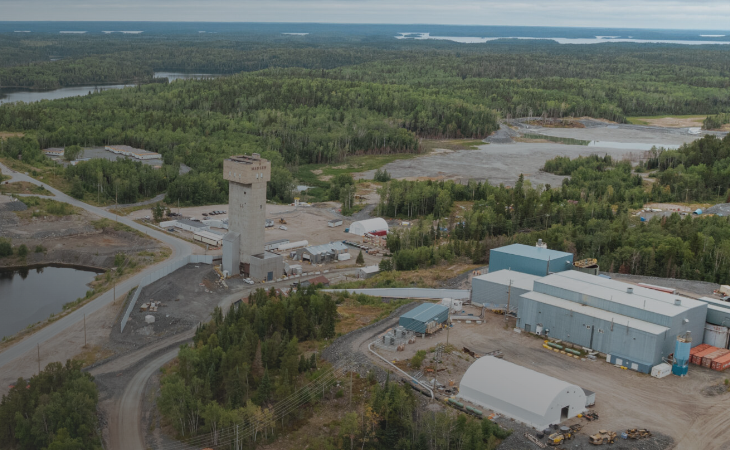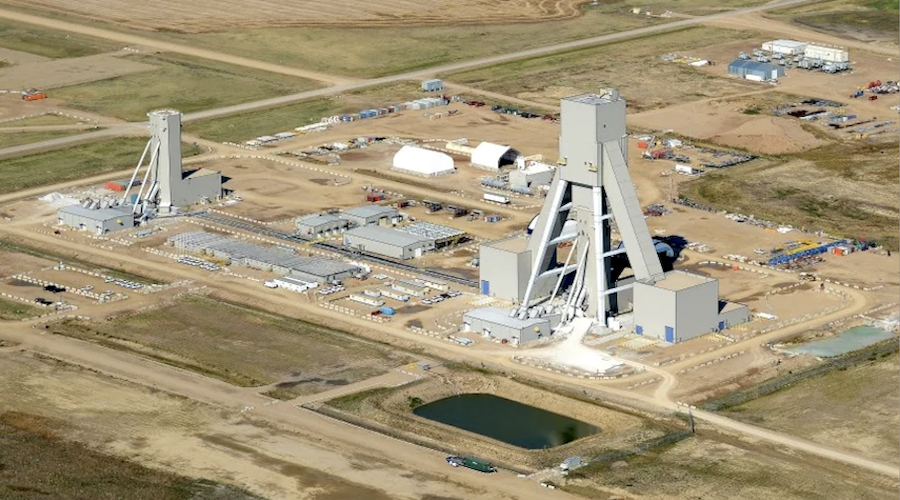OTTAWA - A new study entitled Levelling the Playing Field reveals the cost to explore and build new mines is as much as 2.5 times higher in northern Canada, largely as a result of a lack of critical infrastructure. This is creating major obstacles to exploring and operating in Canada's remote and northern regions.
The study was produced by the Mining Association of Canada (MAC), the Prospectors & Developers Association of Canada (PDAC), the Association of Consulting Engineering Companies - Canada, the NWT & Nunavut Chamber of Mines, and the Yukon Chamber of Mines. The report defines "north" or "northern" to include Canada's territories, as well as remote and northern regions of the provinces.
The study's main findings were two-fold. First, the costs of mineral exploration and building and operating mines are significantly higher in remote and northern regions of Canada's provinces and territories. Second, this cost premium is directly linked to the lack of infrastructure in these areas. Unlike many of their southern counterparts, companies operating in these remote areas need to invest in costly, but essential infrastructure like ports, power plants, winter and permanent roads, and accommodation facilities. In many cases, there are also sparse populations from which to hire a workforce.
By commodity type, capital costs were highest for base metal mines. To develop a copper-zinc-lead mine, for example, costs 2.5 times what it would in the south. The cost was about double for gold mines, and only 15% to 20% higher for diamond mines in the territories.
Exploration costs varied directly with distance from transportation infrastructure, with the most remote project costing six times that of the least remote project.
Direct mining employment and mining output across the northern regions of all provinces neared 16,000 workers and exceeded $3.4 billion respectively in 2011. In the territories, recent data indicate that mining accounts for approximately 15% of overall employment in the Yukon, Northwest Territories and Nunavut combined. Sustaining these benefits for future generations will require integrated, innovative policy responses by governments to create an attractive investment climate.
Despite Canada's current leadership in mining, there are two main indicators that suggest the industry's long term viability is in jeopardy: reserves for several base metals have experienced significant declines since the 1980s, and production volumes of key commodities have also been declining relative to other mining countries. Resolving these issues involves increasing exploration activity to make more discoveries as a means of replacing declining reserves, and then bringing new and existing discoveries into production. Remote and northern parts of Canada hold the key to resolving both challenges.
Recently, governments have started to bring a sharper focus on economic development in the north. The federal budget 2015, for example, proposes to increase the borrowing limit for the governments of the Northwest Territories ($1.3 billion) and Nunavut (650 million), while the extension of Canadian exploration expenses (CEE) to include community consultation expenses will reduce the costs of exploration. The intent of the former is to give the territories greater flexibility in exploring future investments, including in infrastructure to support resource development and economic growth. Quebec's Plan Nord is another strong commitment to northern development, and this government's recent commitment to extend Route 167 to the Renard diamond mine is the kind of initiative required to enable new mineral exploration and mining development.
However, the study reveals additional strategic investments are warranted to overcome the cost burden and make the region more competitive for global mineral investment. In the absence of additional public infrastructure investments, the authors recommend taxation policy reform for both the exploration and production phases of mining that will help level the playing field for companies seeking to work in remote and northern regions of Canada.
Policy Recommendations:
- To support exploration, the group advocates for a new and enhanced federal mineral exploration tax credit (METC) for projects in remote and northern parts of Canada at 25% versus the current 15%, as well as financial incentives to make the costs of drilling for early stage exploration projects more economically feasible.
- To support mining companies wanting to build and operate in remote and northern areas, the group recommends a base 10% investment tax credit, in addition to either: 1) a 15% investment tax credit for eligible infrastructure, or 2) a pardonable 25% conditionally repayable contribution for infrastructure investments. Flexibility is needed to enhance the project economics for companies in both taxable and tax limited positions.
With infrastructure being a critical need, the group also recommends the establishment of a northern infrastructure investment bank in the territories for mine related infrastructure that generate public benefits, but do not meet the "public use" criterion of existing federal progra





Comments